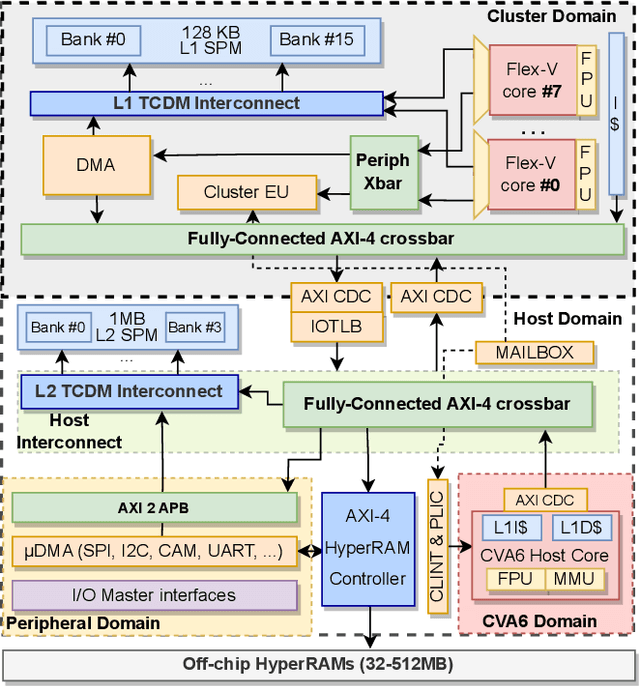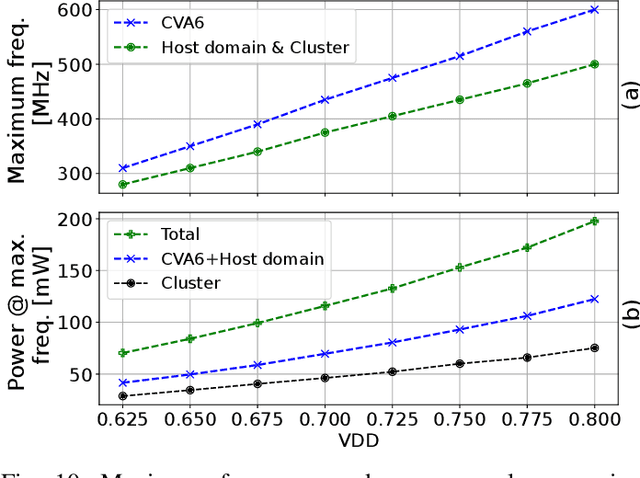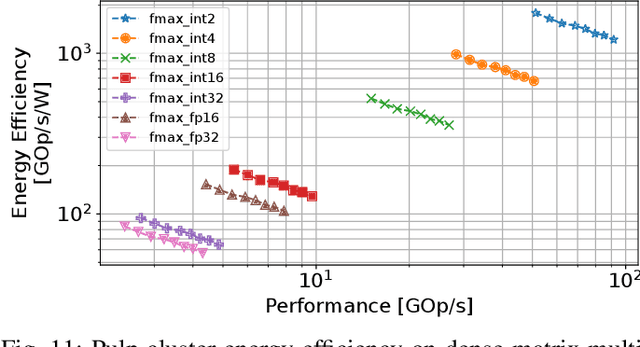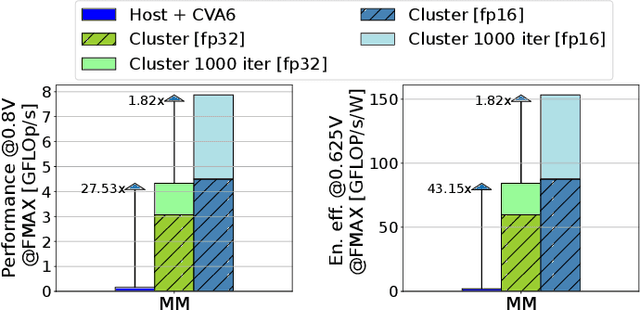Nils Wistoff
A Heterogeneous RISC-V based SoC for Secure Nano-UAV Navigation
Jan 07, 2024



Abstract:The rapid advancement of energy-efficient parallel ultra-low-power (ULP) ucontrollers units (MCUs) is enabling the development of autonomous nano-sized unmanned aerial vehicles (nano-UAVs). These sub-10cm drones represent the next generation of unobtrusive robotic helpers and ubiquitous smart sensors. However, nano-UAVs face significant power and payload constraints while requiring advanced computing capabilities akin to standard drones, including real-time Machine Learning (ML) performance and the safe co-existence of general-purpose and real-time OSs. Although some advanced parallel ULP MCUs offer the necessary ML computing capabilities within the prescribed power limits, they rely on small main memories (<1MB) and ucontroller-class CPUs with no virtualization or security features, and hence only support simple bare-metal runtimes. In this work, we present Shaheen, a 9mm2 200mW SoC implemented in 22nm FDX technology. Differently from state-of-the-art MCUs, Shaheen integrates a Linux-capable RV64 core, compliant with the v1.0 ratified Hypervisor extension and equipped with timing channel protection, along with a low-cost and low-power memory controller exposing up to 512MB of off-chip low-cost low-power HyperRAM directly to the CPU. At the same time, it integrates a fully programmable energy- and area-efficient multi-core cluster of RV32 cores optimized for general-purpose DSP as well as reduced- and mixed-precision ML. To the best of the authors' knowledge, it is the first silicon prototype of a ULP SoC coupling the RV64 and RV32 cores in a heterogeneous host+accelerator architecture fully based on the RISC-V ISA. We demonstrate the capabilities of the proposed SoC on a wide range of benchmarks relevant to nano-UAV applications. The cluster can deliver up to 90GOp/s and up to 1.8TOp/s/W on 2-bit integer kernels and up to 7.9GFLOp/s and up to 150GFLOp/s/W on 16-bit FP kernels.
On-Demand Redundancy Grouping: Selectable Soft-Error Tolerance for a Multicore Cluster
May 25, 2022



Abstract:With the shrinking of technology nodes and the use of parallel processor clusters in hostile and critical environments, such as space, run-time faults caused by radiation are a serious cross-cutting concern, also impacting architectural design. This paper introduces an architectural approach to run-time configurable soft-error tolerance at the core level, augmenting a six-core open-source RISC-V cluster with a novel On-Demand Redundancy Grouping (ODRG) scheme. ODRG allows the cluster to operate either as two fault-tolerant cores, or six individual cores for high-performance, with limited overhead to switch between these modes during run-time. The ODRG unit adds less than 11% of a core's area for a three-core group, or a total of 1% of the cluster area, and shows negligible timing increase, which compares favorably to a commercial state-of-the-art implementation, and is 2.5$\times$ faster in fault recovery re-synchronization. Furthermore, unlike other implementations, when redundancy is not necessary, the ODRG approach allows the redundant cores to be used for independent computation, allowing up to 2.96$\times$ increase in performance for selected applications.
 Add to Chrome
Add to Chrome Add to Firefox
Add to Firefox Add to Edge
Add to Edge